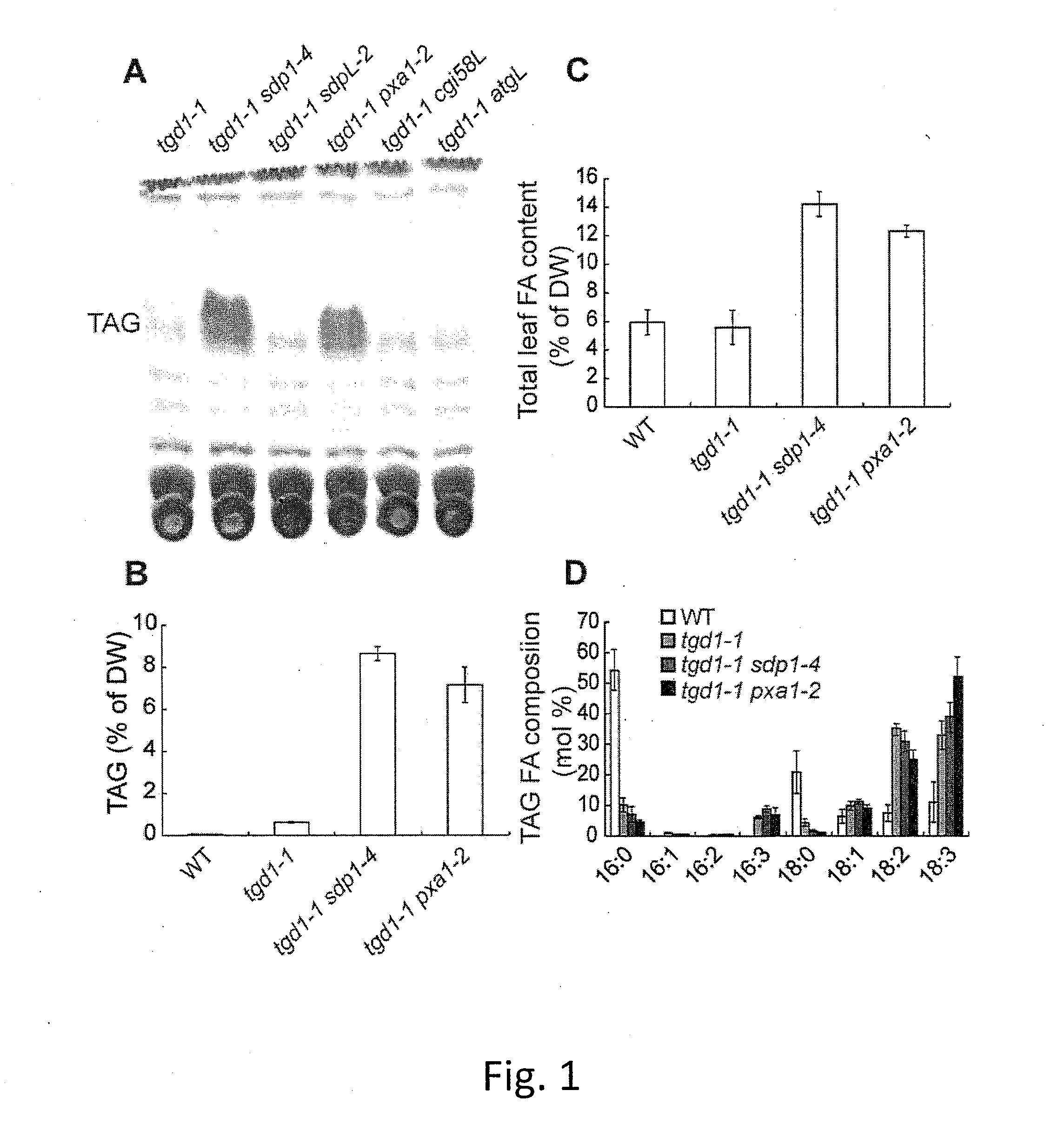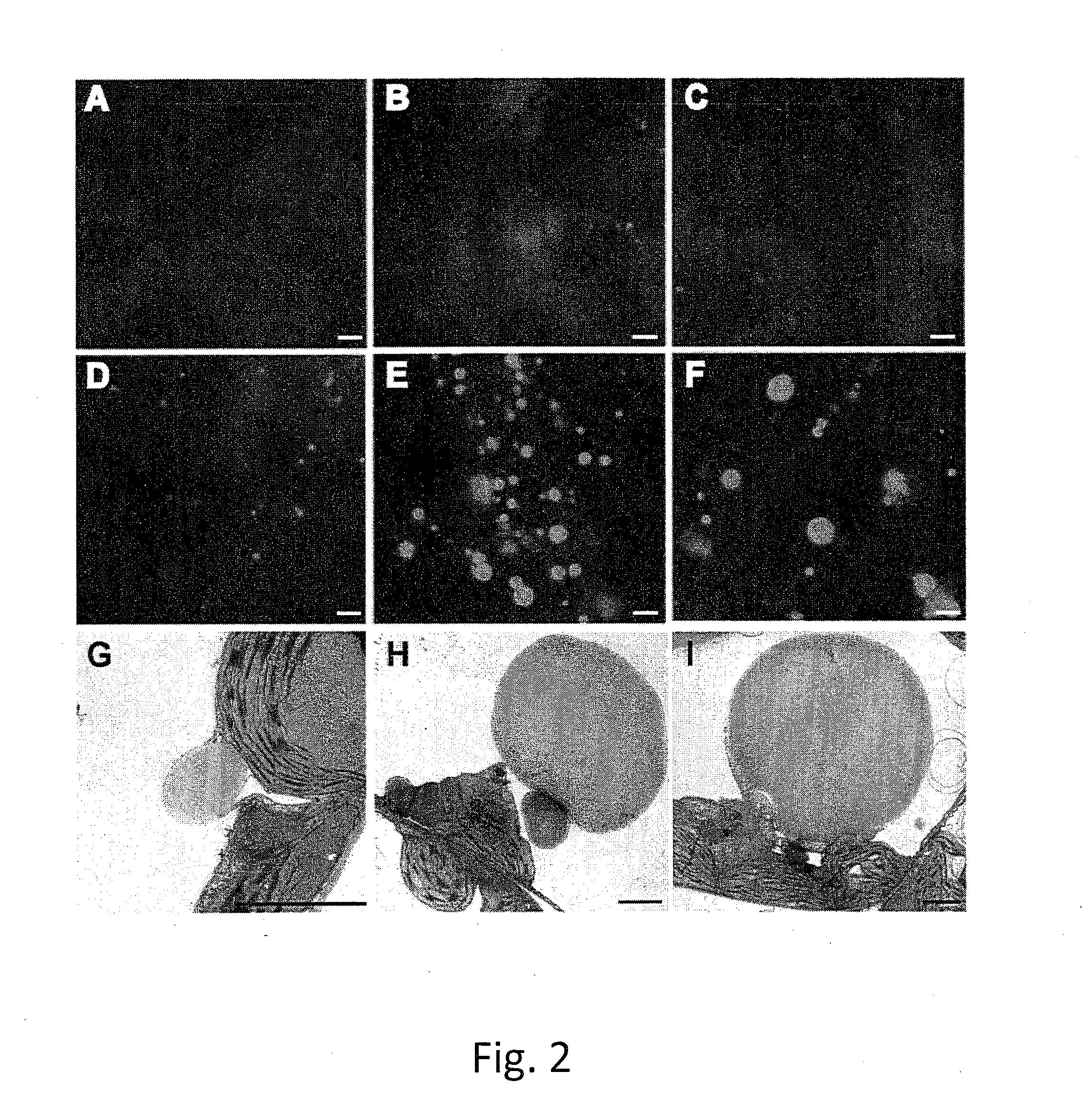Enhanced Triacylglycerol Accumulation in Vegetative Tissues of Plants
a technology of triacylglycerol and vegetative tissues, applied in the direction of plant cells, biochemistry apparatus and processes, fused cells, etc., can solve the problems of limited positive impact on the oil content of plant vegetative tissues, adverse growth and developmental defects, and limit the availability of tags for accumulation, so as to expand the production of plant oils. , to achieve the effect of enhancing the nutritional value of vegetative tissues
- Summary
- Abstract
- Description
- Claims
- Application Information
AI Technical Summary
Benefits of technology
Problems solved by technology
Method used
Image
Examples
Embodiment Construction
[0014]Trigalactosyldiacylglycerol (TGD) proteins are a group of proteins required for lipid import into chloroplasts from endoplasmic reticulum. The TGD proteins TGD1, TGD2, and TGD3 form a multipartite ABC lipid transporter. The work of Xu, et al. (2003 and 2005) describe the identification and effects of mutation of the TGD1 protein and the generation of the mutant lines, including tgd1-1 cells and plants.
[0015]While mutant cells and mutant plants bearing the tgd1-1 mutation in combination with knockout of either sugar dependent1 lipase (SDP1) or peroxisomal transporter1 (PXA1) are exemplified herein, cells and plants bearing other inactivated TGD proteins and mutated TGD genes and alleles or other inactive alleles of TGD1 in combination with inactivated or otherwise suppressed lipase and transporter activities produced by methods other than by knockout are expected to also result in plant vegetative tissues having enhanced dry weight percentage TAG.
[0016]Enhanced dry weight perce...
PUM
| Property | Measurement | Unit |
|---|---|---|
| diameter | aaaaa | aaaaa |
| concentration | aaaaa | aaaaa |
| pH | aaaaa | aaaaa |
Abstract
Description
Claims
Application Information
 Login to View More
Login to View More - R&D
- Intellectual Property
- Life Sciences
- Materials
- Tech Scout
- Unparalleled Data Quality
- Higher Quality Content
- 60% Fewer Hallucinations
Browse by: Latest US Patents, China's latest patents, Technical Efficacy Thesaurus, Application Domain, Technology Topic, Popular Technical Reports.
© 2025 PatSnap. All rights reserved.Legal|Privacy policy|Modern Slavery Act Transparency Statement|Sitemap|About US| Contact US: help@patsnap.com



